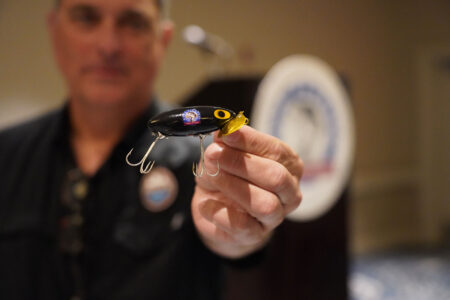New York State Department of Environmental Conservation (DEC) Commissioner Basil Seggos announced a two-year study to monitor the health and contaminant loads of Atlantic striped bass in New York’s marine waters. The survey will collect samples of striped bass to measure levels of polychlorinated biphenyl (PCB) and other contaminants to update commercial fishery restrictions and the State Department of Health’s consumption advisories for recreational anglers, as well as enhance the understanding of New York’s striped bass population.
“Striped bass can be found in all of New York’s marine waters, from the Troy Dam to spawning grounds in the mid-Hudson and nursery habitat in Long Island Sound to their annual spring and fall coastal migrations in the Atlantic Ocean,” said DEC Commissioner Basil Seggos. “DEC is thrilled to be working with our partners to understand how decades of collective environmental efforts are improving coastal habitats and contributing to healthier fisheries and increased benefits to New Yorkers.”
DEC is partnering with Cornell University and Cornell Cooperative Extension of Suffolk County to collect striped bass (Morone saxatilis) samples through December 2023. This survey will collect samples of striped bass from the Atlantic Ocean, Long Island Sound, and New York Harbor to perform contaminant analysis and biological studies that will inform commercial fishery restrictions, update New York State Department of Health (DOH) Fish Consumption Advisories and improve New York’s understanding of contaminants in Atlantic striped bass stock.
State Department of Health Commissioner Mary T. Bassett said, “The purpose of this toxicological research is to determine the levels of PCBs in the tissue of striped bass, as humans may be exposed to PCBs in the waterways through fish consumption. Each year we issue updated fish advisories based on these types of studies so New Yorkers will avoid any potential health risks, and fish from waterbodies in New York can continue to be eaten as part of a healthy diet.”
Cornell University, College of Agriculture and Life Science Professor Emeritus Patrick Sullivan said, “Improving the understanding of contaminants in New York’s striped bass population has been a priority of ours for several years and I’m very pleased to see this project moving forward. We are excited to be completing this important work with our partners at DEC and Cornell Cooperative Extension in order to advance research and support New York’s fishing opportunities.”
Cornell Cooperative Extension Suffolk County Executive Director Vanessa Pino Lockel said, “Striped bass play a major role in New York’s marine environment and are an important ecological and economic resource for the State’s coastal communities. We are excited to be a part of this cooperative striped bass project that brings together the expertise of DEC, Cornell University, CCE Suffolk, as well as our local commercial and recreational fishing partners to reevaluate New York’s striped bass fishery.”
Findings of elevated levels of contaminants in striped bass in the early 1990s caused New York to restrict the commercial harvest of striped bass to the area east of the mouth of Wading River Creek in Long Island Sound and east of the terminus of East Rockaway Inlet in the Atlantic Ocean. The last comprehensive assessment of PCB concentrations in New York’s marine district took place in 1994, with supplemental studies taking place as late as 2007.
For this study, areas of New York’s marine waters are divided into various zones and striped bass of legal commercial size will be collected monthly, April through December, from each zone. In addition, five fish greater than legal size will be collected during each monthly period as available from each zone. The first year of the survey will focus on sampling the Atlantic Ocean and Long Island Sound and the second year will collect fish from New York-New Jersey Harbor.
Analytical and quality control work will be conducted by DEC’s Hale Creek Field Station laboratory and commercial analytical laboratories. In addition to PCBs, contaminant analysis will include testing for mercury and per- and polyfluoroalkyl substances (PFAS) from all survey areas, as well as dioxins and furans in fish collected from the New York-New Jersey Harbor. Samples from each fish will also provide data on size, age, sex, disease prevalence, population genetics, and diet. Funding for this survey is from the New York State Environmental Protection Fund.



